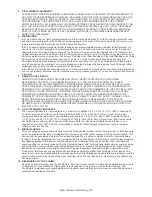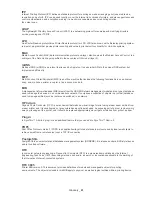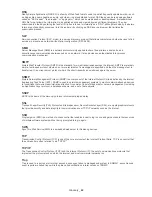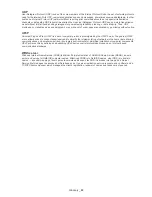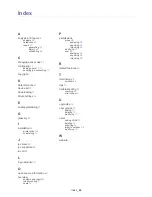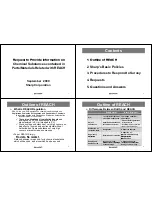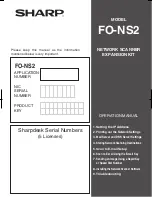
Glossary
_ 62
RSS
Really Simple Syndication (RSS 2.0) is a family of Web feed formats used to publish frequently updated works—such
as blog entries, news headlines, audio, and video—in a standardized format. RSS feeds can be read using software
called an "RSS reader", "feed reader", or "aggregator", which can be web-based or desktop-based. A standardized
XML file format allows the information to be published once and viewed by many different programs. The user
subscribes to a feed by entering the feed's URI (often referred to informally as a "URL", although technically, those two
terms are not exactly synonymous) into the reader or by clicking an RSS icon in a browser that initiates the
subscription process.
SLP
Service Location Protocol (SLP, srvloc) is a service discovery protocol that allows computers and other devices to find
services in a local area network without prior configuration. (RFC 2608)
SMB
Server Message Block (SMB) is a network protocol mainly applied to share files, printers, serial ports, and
miscellaneous communications between nodes on a network. It also provides an authenticated Inter-process
communication mechanism.
SMTP
Simple Mail Transfer Protocol (SMTP) is the standard for e-mail transmissions across the Internet. SMTP is a relatively
simple, text-based protocol, where one or more recipients of a message are specified, and then the message text is
transferred. It is a client-server protocol, where the client transmits an email message to the server.
SNMP
Simple Network Management Protocol (SNMP) is a component of the Internet Protocol Suite as defined by the Internet
Engineering Task Force (IETF). SNMP is used in network management systems to monitor network-attached devices
for conditions that warrant administrative attention. It consists of a set of standards for network management, including
an Application Layer protocol, a database schema, and a set of data objects.
SSDP
SSDP is the basis of the discovery protocol of universal plug-and-play.
SSL
Transport Layer Security (TLS) Protocol and its predecessor, Secure Sockets Layer (SSL), are cryptographic protocols
that provide security and data integrity for communications over TCP/IP networks such as the Internet.
SSO
Single sign-on (SSO) is a method of access control that enables a user to log in once and gain access to the resources
of multiple software systems without being prompted to log in again.
SWS
SyncThru Web Service(SWS) is a embedded web server for Samsung devices.
TCP
Transmission Control Protocol (TCP) is one of the core protocols of the Internet Protocol Suite. TCP is so central that
the entire suite is often referred to as "TCP/IP."
TCP/IP
The Transmission Control Protocol (TCP) and the Internet Protocol (IP); the set of communications protocols that
implement the protocol stack on which the Internet and most commercial networks run.
Trap
Trap is used to report an alert or other asynchronous event about a managed subsystem. In SNMPv1, asynchronous
event reports are called traps while they are called notifications in later versions of SNMP.
Summary of Contents for CLX 6210FX - Color Laser - All-in-One
Page 1: ...SyncThru Admin 5 Job Accounting Plug in Admin Guide...
Page 65: ......






